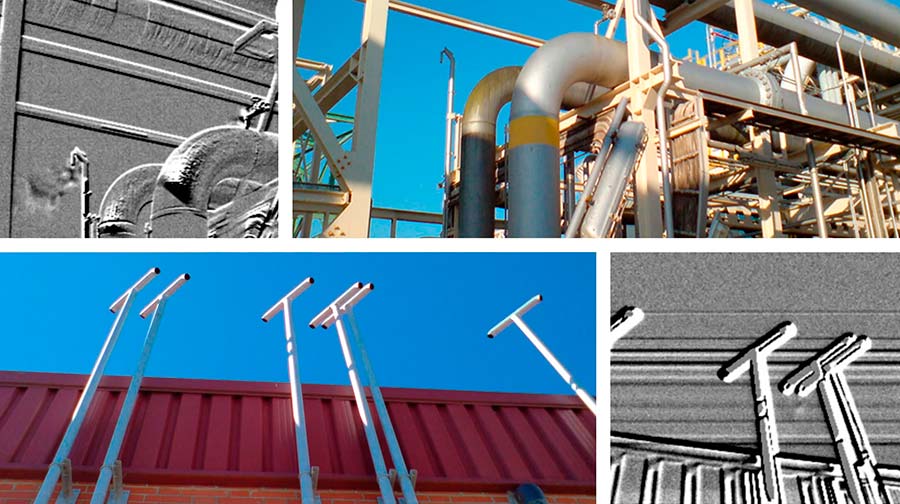EHS Techniques was commissioned for a three year LDAR survey of a Natural Gas transportation network in Europe. During the 2013-2015 survey, a total of 120 regulation nodes, 15 compression stations, 3 LNG plants and 3 deep underground storage facilities (onshore & offshore) were monitored. Client specific factors has resulted in an underestimation of 8% to 9% compared to those average HFS emission factors basically because there were some type of components without specific fac- tors (big flanges, pig traps, big connectors, etc.) and the lack of enough representative HFS results. Results will be used to report GHG fugitive emissions of the company and future surveys are now in development.
Project scope
The study aimed to identify and quantify methane emissions to provide a reliable baseline for reporting and emissions management, supporting the operator’s commitment to sustainable gas infrastructure management and regulatory compliance.
Key objectives included:
- Assessment of fugitive emissions from pipelines and facilities.
- Identification of gaps in emission factors and sources of potential underestimation.
- Provision of data for corporate GHG reporting and environmental performance improvement.
Methodology
The campaign applied site-specific monitoring and emission factor analysis:
- Direct measurements using HFS (High Flow Sampler)
- Quantification of emissions from valves, flanges, large connectors, and other components.
- Use of client-specific emission factors
- Adjustment of generic HFS emission factors to reflect actual equipment and operational conditions.
- Noted underestimation of 8–9% compared with average HFS factors due to missing component-specific factors and limited representative results.
- Data consolidation and reporting
- Integration of field measurements with emission factor calculations.
- Preparation of a comprehensive emissions inventory for internal and regulatory use.
Results and added value
The campaign produced:
- A detailed inventory of fugitive emissions across multiple European gas infrastructure assets.
- Identification of high-emission components and operational areas requiring mitigation.
- Enhanced understanding of emission factor limitations for future measurement campaigns.
- Baseline data supporting regulatory compliance, OGMP reporting, and sustainability initiatives.
The results provide the foundation for ongoing emissions monitoring programs and future environmental performance improvements within the network.
Closing statement
With this project, EHS Techniques reinforces its expertise in methane emissions detection, fugitive emissions quantification, and operational monitoring, enabling gas operators to achieve accurate reporting, compliance, and continuous emission reduction across their European infrastructure.

 Español
Español
